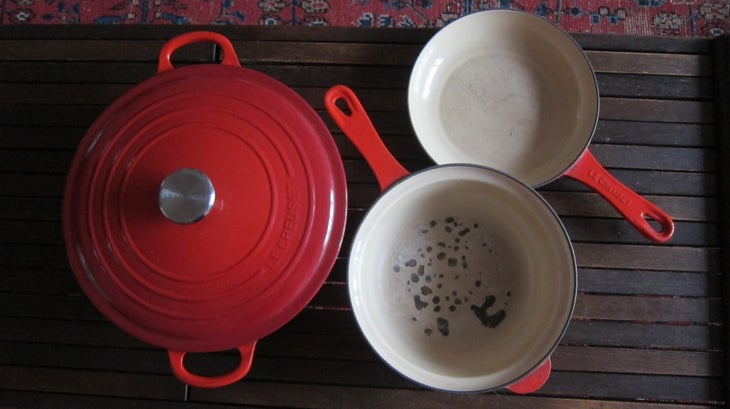Heading out the door? Read this article on the new Outside+ app available now on iOS devices for members! Download the app.
For many of us, the biggest evolutionary step we’ll take as home chefs is investing in quality cookware. That might mean springing for a really great non-stick pan, splurging on a top-of-the-line blender, or—as was the case for me—getting spoiled by a generous mother-in-law with the gift of an entire Le Creuset set. Upgrading your culinary arsenal is a simple act that can feel like a graduation from the realm of amateurs to sautéing, searing, and braising expertise.
My own fondness for the Le Creuset brand was born mostly out of aesthetics; the cheerful color palette coupled with a Grandma’s-kitchen vibe really works with my vintage-loving sensibilities. Beyond looking good, the enameled cast iron—which conducts heat like nobody’s business—does a great job meeting all my cooking needs, from baking to grilling and beyond.

My sauté pans, skillet, and casserole pot have each gotten a heavy workout over the years, but one look will tell you that it’s the medium-sized saucepan that sees the most action. Inside, on the bottom, the enamel has chipped, flaked, and literally popped off in places, revealing the cast iron beneath. If only I’d thoroughly examined the user’s manual, I’d have learned two very important things about Le Creuset: 1. It offers a lifetime guarantee on its cast-iron cookware, and 2. You don’t get to take advantage of that guarantee if you “misuse” your pan. Learn from my mistake and read your user’s manual before you do anything else!
Caring for the pans properly begins with always heating them with something inside. An empty pan, if overheated, can fall victim to the aforementioned enamel cracking. Another no-no is immersing your hot pans in cold water, which can result in “thermal shock” that may also cause the surfaces to fissure. Finally, never use metal utensils with your enameled cookware; sticking to wood or silicone will keep accidental scratches and nicks from ruining the look and efficacy of your pots and pans.
Your turn! Do you have a favorite brand of cookware? What do you love about it, and what tips or tricks do you use to care for it? Please share!
——
Aurelia d’Andrea’s passion for travel is deeply intertwined with her love of food. Whether in Perth, Prague, or Phnom Penh, she always gravitates toward local markets in search of edible treasures, and takes pleasure in re-creating tasty travel memories at home in her tiny Parisian kitchen.